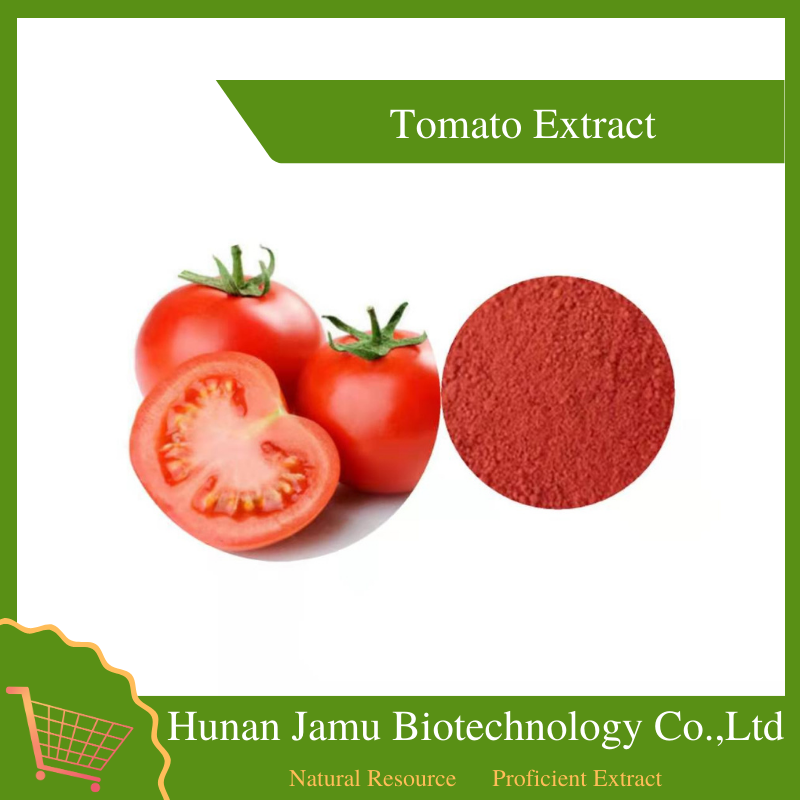 You are here:
Home
> Product Center
> Vegetable & Fruit Ingredient
> View Details
You are here:
Home
> Product Center
> Vegetable & Fruit Ingredient
> View Details


 You are here:
Home
> Product Center
> Vegetable & Fruit Ingredient
> View Details
You are here:
Home
> Product Center
> Vegetable & Fruit Ingredient
> View Details

【Product Name】: Tomato Extract
【Botanical Name】: Lycopersicon esculentum or Lycopersicon lycopersicum
【Part used】: Fruit
【Appearance】: Brownish Red powder
【Specification】: 4:1 10:1 / Juice Powder / Lycopene 5-98%
【Storage Period】: 24 Months
【Package】: 1kg/bag 25kg/drum
【Test Method】: HPLC
【Storage Conditions】: Store in cool and dry places. Keep away from strong light and heat.
Description
Tomato plants are vines, initially decumbent, typically growing 180 cm or more above the ground if supported, although erect bush varieties have been bred, generally 100 cm tall or shorter.
The leaves are 10–25 cm long, odd-pinnate, with five to 9 leaflets on petioles, each leaflet up to 8 cm long, with a serrated margin. The flowers are 1–2 cm across, yellow, with five pointed lobes on the corolla; they are borne in a cyme of 3–12 together.
Tomato fruit is classified as a berry. As a true fruit, it develops from the ovary of the plant after fertilization, its flesh comprising the pericarp walls. The fruit contains hollow spaces full of seeds and moisture, called locular cavities. These vary, among cultivated species, according to type. Some smaller varieties have two cavities, globe-shaped varieties typically have 3–5, beefsteak tomatoes have a great number of smaller cavities, while paste tomatoes have very few, very small cavities. For propagation, the seeds need to come from a mature fruit and be dried or fermented before germination.
Chemical Composition
Mainly contains vitamin B1, vitamin B2, phosphorus and niacin, choline, carotene, malic acid, citric acid, carbohydrates, protein, calcium, iron, glutathione, tomatine, etc. Tomatoes are the most abundant food source of lycopene, and lycopene has strong antioxidant activity.